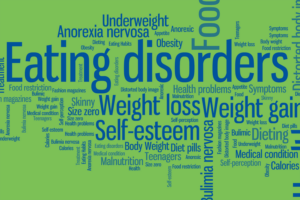
By Kathy Hubbard
Studies conducted in the U.S., Canada, and Australia all concluded that there has been a significant rise in diagnosed eating disorders among children and adolescents since the onset of the pandemic.
“The study of six hospitals across Canada found new diagnoses of anorexia nearly doubled during the first wave of the COVID-19 pandemic. And the rate of hospitalization among those patients was almost threefold higher, versus pre-pandemic years,” read an article published at WebMD on December 13, 2021, by Amy Norton.
A report on the American Society for Nutrition’s website by Eric Graber said, “It appears that the prevalence and severity of eating disorders may be spiking even more due to the anxiety and stress unleashed by the COVID-19 pandemic.
“A survey reported in the International Journal of Eating Disorders in July 2020, for example, found that overall individuals with anorexia ‘experienced a worsening of symptoms as the pandemic hit.’ In addition, individuals with bulimia nervosa and binge-eating disorder ‘reported increases in their binge-eating episodes and urges to binge.’”
Claire Mysko, the National Eating Disorders Association (NEDA) CEO, said, “Eating disorders thrive in isolation. While family and friends can provide some comfort and support for individuals trying to manage their eating disorders, it may not be enough for many during these particularly stressful times.”
The American Psychiatric Association describes an eating disorder as “behavioral conditions characterized by severe and persistent disturbance in eating behaviors and associated distressing thoughts and emotions. They can be severe conditions affecting physical, psychological and social function.”
Roughly five percent of the population in the U.S. is affected with eating disorders that include anorexia nervosa, bulimia nervosa, binge eating disorder, avoidant restrictive food intake disorder, other specified feeding and eating disorder, pica and rumination disorder.
You can find lots of information about the details of each of these conditions at NEDA and APA’s websites. Eating disorders often co-occur with other psychiatric disorders such as obsessive-compulsive disorder, alcohol and drug abuse, and mood and anxiety disorders.
Dr. Holly Agostino directs the eating disorders program at Montreal Children’s Hospital. She says that the young people diagnosed during the pandemic may have already struggled with body image, anxiety, or other mental health issues. The pandemic was the tipping point.
“I think a lot of it had to do with the fact that we took away kids’ daily routines,” Dr. Agostino said. “With everything disrupted – including meals, exercise, sleep patterns, and connections with friends – vulnerable children and teens may have turned to food restriction. And since depression and anxiety often overlap with eating disorders, any worsening in those mental health conditions could have contributed to anorexia in some kids too.”
Many signs may signal a person has an eating disorder. NEDA’s website lists the first as seeing any signs of change. Changes in attitudes and behaviors related to food, their size, their weight, or anything about their “self-perception.”
Other signs include withdrawal from social activities, including no longer eating with others; developing food rituals like cutting food into tiny pieces, chewing each bite an unusually large number of times, or eating very slowly. In addition, the person may start hoarding or hiding food, or they may begin eating in secret or disappear after meals, often to the bathroom.
They may become preoccupied with fad diets. This may entail cutting out food groups such as no sugar, carbs, or dairy. They may become fixated with vegetarianism or veganism. You may notice that they are frequently checking in the mirror for perceived flaws or obsessing over shape and weight; or that they’re excessively exercising, even when ill or injured.
Many serious physical issues go along with eating disorders that result from malnutrition, including gastrointestinal problems, fainting, dizziness, feeling cold all the time, or having trouble sleeping.
NEDA’s website has an eating disorders screening tool that can help you ascertain if you or your child is at risk of developing a disorder or already has one. There are many well-established treatments for eating disorders, and the sooner treatment is started, the better. So, don’t put it off; it could be a matter of life or death.
Kathy Hubbard is a member of the Bonner General Health Foundation Advisory Council. She can be reached at kathyleehubbard@yahoo.com.

